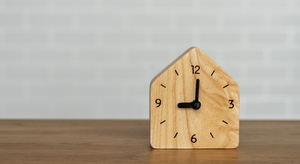Downsizing is a Step-By-Step Approach
By Chad Schernikau
When you come upon the stage of your life where your home is too big for your needs it is time to downsize. Downsizing can be a stressful time because you have some many memories and possessions. Which possessions you keep and what do you give away. There is a method to the madness, but you must approach downsizing in a step-by-step approach. Downsizing is just not about getting rid of stuff to move into a smaller home. It is also about what does you next place need to look like. Do you want an active adult community? Do you need help with a daily routine? The first thing is to be honest with yourself. Ask these simple questions and it will help clarify if you do need to downsize and what type of housing is the next step.
Questions to ask
Do I have too much house?
Can I maintain the house?
Does my house meet my needs physically?
Are family, friends, and doctors, etc. close to me?
Can I handle the daily routines – making food to eat, laundry, bathing, etc.?
Would making a move improve my lifestyle?
By answering these questions, it will help you to make a better-informed decision and to determine what your next place to live will look like.
In order to really look at what the next place to live, you need to know what options are out there. Senior housing had grown so much and there are lot to choose from depending on the level of care or services you need.
Types of Senior Housing
Aging in Place – Modify your home to meet your current and future physical needs. For example, widening doorways, chair lift, stepless shower entry
Active Adult Communities (55+): This type of housing is one of the most popular. Many 55+ communities are being built now. These communities are often age targeted or age restricted. These are typically maintenance free and offer a monthly association. Most of these communities offer single family homes, cottages, patio homes, condos or townhomes. These types of communities offer lots of amenities as well. Typical amenities are pools, clubhouse, various activities, fitness center, and walking trails. There are a variety of communities in all prices ranges and amenities.
Senior Apartments: These are regular apartments with typical amenities, but the only difference is they are age restrictive. Typical age restrictions are 55 and 62 years of age. Senior apartments typically have two types of payment plans. One is a reduced rent for people that can qualify. The second is market rate that mirror the rental rates of standard apartment communities. Both types offer many amenities such as pools, fitness centers, clubhouse, various types of activities.
Independent/Retirement Communities with Services: These are retirement communities that have many of the amenities, social activities, and services as other housing options offer. The difference in these independent communities is that some offer health care services and can accommodate older people with chronic health problems. These communities offer a restaurant style meal and many social activities. The usual has exercise facilities, planned activities, and resident clubs.
Assisted Living / Personal Care Homes / Senior Living Communities: These communities offer help with all aspects of daily activities such as administering medication or supervision with self-administered medication, eating, bathing, grooming, dressing, and toileting.
Memory Care Communities: These are very specialized communities that only work with seniors that have been medically diagnosed with Alzheimer’s or other forms of memory related disorders. These facilities typically provide 24-hour staff, meal plans, activities and programs to help stimulate the mind and body.
Skilled Nursing (Nursing Homes)/ Physical Rehabilitation Communities: This type offer hospital type attention in an institutional setting. The amount of services, food, activities, personal care attention, and structure of the facility can vary depending on the nursing home. Some nursing homes may specialize in short term or acute care, intermediate or long-term skilled nursing.
Home Care: The services are usually offered licensed home health care service providers and companies that provide medical and non-medical assistance such as: bathing, dressing, meal preparation, and transportation.
How do you know what you need? What are the most important items? How do I downsize? It can be overwhelming to some but there are steps you can take to help in this process. Once you determine your next place to live. The first step is space planning.
Space Planning
Space planning is critical. When a person is moving from a larger to smaller home, space for all the persons items becomes an issue. It is like putting six gallons of dirt into a five-gallon bucket. It won’t all fit. Try these things to help with space planning.
Subtract the square footage of the future home from the current home
Add in new square footage like a den, deck, or sun room
Measure the furniture that you will be moving to make sure it fits
Decide where each piece of furniture goes – use the space planning work sheet
If you are going to a facility or community – ask them for space planning help or a floor plan of the unit/home, you will be living in.
Just because the furniture does not fit in a room does not mean it has to go. Setting up a new home can be different for everyone. For example, I do not use a formal dining room – I might use that space as an office. Someone else might use a formal dining room, as it is meant to be. Before you get rid of anything, think outside the box and see if you can use it somewhere else in the house. The last thing you want to do, is to get rid of something of value if you could have used it elsewhere in the house.
Space planning is not just about what will fit. It is also about assessing your future needs. Basically, that is looking at what you need not what you have. Everyone can make up a reason why they need to keep items when they move. When moving or transitioning take a hard look at what you have and decide what you truly need. Where and what type of home you are moving to will depend on what you need. For example, if you are moving to a warm weather climate, do you really need the snow blower? When assessing future needs look at everything you have and ask these three questions:
Is it family sized?
Will it fit?
Is it house oriented?
Is it family sized? Do you have large items that might not be needed anymore – like a 12-person dining room table or riding lawnmower
Will it fit? Do you have the space in the house for the larger items? Compare the size of the items and compare it to the size of the room (square footage).
Is it house oriented? Are you moving from a house to a condo or townhome? Get rid of things you will not need like large gardening tools, large pieces of furniture, or multiple of things, like if you have four spatulas. You might not have the space in the kitchen for all your gadgets.
Assessing the future needs of all items will help you to get a better idea of what you will need and what will fit. It is a good strategy to help reduce the amount of clutter when moving.
What Stays and What Goes
Once you have determined where you are going, then is time to decide what stays or goes. That can be as easy or hard as you want to make it. Create a plan to help you achieve this, sometimes overwhelming, task. With a plan in place and people to help you – you can achieve your goals. Below are a few things to thing as you are deciding on what to keep or let go
Try not to use the, “I might need this” – if you have not used it in a while, good chances you will not use it anytime soon.
If it has not been used in a year – get rid of it.
What is the cost and effort to pack, move, and unpack it? If it is not worth the time, then get rid of it.
If it needs repair, do you have time to fix it or will you fix it? If not, get rid of it.
Not able to decide? Get a box, label the date on it and if you do not touch it in a year then get rid of it?
Throwing out things that are not used, broken, or just not needed in your next home is very important. The more you decide to throw out the easier and the less cluttered your next home will be.
When getting rid of things, do not forget your children. When you are moving it is a great time to give some of those keepsakes to your kids. They could be your kids’ arts and crafts, family photos, things that they will cherish and can use to start their own family traditions. By doing this, it could help in breaking the sentimental ties or feelings to your house. When giving keepsakes to you children there needs to be some guidelines.
Ask your loved ones to sort the items and put them into categories.
Take now
Take next time
Give away
Throw away
Make sure that the keepsakes they want to give or throw away are not items you would want to keep for sentimental value. To not hurt feelings or create confusion always:
Show the loved one what is being given or throw away so that they may make the decision to do that. There might be items that will stay.
Never assume that any keepsake that a family member deems as a throw away is. Always check
Have an open discussion about why some of the items are important to keep. There might be a special story behind it that could be very meaningful
Time Management
Before you start to decide on what stay or goes, make a time management plan. Managing time is, in my opinion, the most important part when downsizing. People can be so overwhelmed that it is hard to know where to start. Managing your time and setting realistic goals on how long and creating a plan on completing the downsizing will help you reduce your stress and be more productive. Here are a few simple steps that you can do to achieve this.
Set a time period – Most downsizing can take between 2-3 months. Set a realistic time period for you to complete this.
Start earlier than later – Always begin this process before the house is listed for sale. The reason for this, if the house sells quickly you will have less time to downsize and this can cause important items to go missing or be put in the wrong place (donated instead of being kept)
Set a specific schedule – what I suggest is to complete a schedule by week and room. For example, week one complete master bedroom. You can set any type of schedule it could be by month, days of week, or any other milestone you choose.
Make sure you TAKE the time – don’t rush this process - There are many items that have value and to properly assess all of them will take time.
Have people in place to help you - Talk with family members or friends to get their input and help. This will make the process easier and less stressful
These are just some basic steps to help you with downsizing into your next place. Always remember to make it a step-by-step approach and take your time.
Chad Schernikau of Total Atlanta Group at Keller Williams Realty is a Senior Real Estate Specialist that specializes in working with the 55+ community in all aspects of real estate and transition management. If you have any questions or need help, please visit www.totalatlantagroup.com or call me at 678-570-8123






